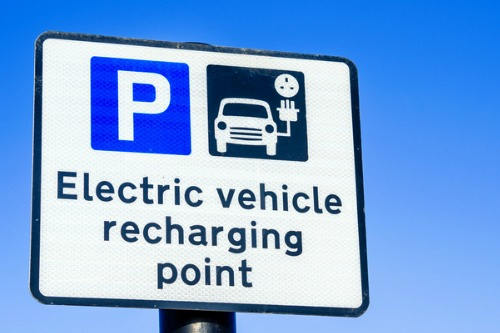Does electric vehicle charging need a boost?

Global sales figures for electric vehicles have reached record levels, but e-mobility development varies greatly from country to country. One similarity stands out, however: public charging infrastructure may be improving, but it is struggling to keep up with demand.
After being stalled by the energy price shock of early 2022, the electric vehicle (EV) market has resumed its strong upward trajectory. The International Energy Agency (IEA) expects EV sales to reach 14 million by the end of 2023, representing a 35 per cent year-on-year increase.
There are numerous factors behind this growth: with more and more EV makers joining the market, consumer choice is increasing as costs fall; many countries, particularly those with limited EV sales penetration, have maintained or even increased financial incentives for EV purchases; and, crucially, charging infrastructure is expanding, although there remains plenty to do in this area for many countries.
In its recent EV Charging Index, consultancy Roland Berger analyses the development of EV markets and charging infrastructure in 30 countries around the globe. Public charging is more convenient than ever, the report finds, with consumer satisfaction up from 67 per cent in mid-2022 to 83 per cent at the end of the year. Many EV owners still rely on home charging, but as the driver demographic changes to include more apartment dwellers without private parking, public charging networks will become increasingly important.
China leads the way for e-mobility
Thanks to its strong EV sales figures and huge investment in charging facilities, China continues to lead the way in the Roland Berger index, while Germany, the United States, the Netherlands and Norway are also showing significant progress.
However, in the countries with the highest sales figures, charging infrastructure development is failing to match the pace of EV growth.
A prime example is Norway, where 87 per cent of new cars sold in 2022 were EVs – more than 25 percentage points higher than any other country. Norway has long been the world’s top performer for EV sales thanks to decades of government incentives, strong purchasing power among its citizens and a stable electricity grid. However, its charging infrastructure has not evolved at the same pace. In Roland Berger’s index, its vehicle-to-charge-point ratio of 24.3 is some way above the global average of 15.9.
It's a similar story in other European countries with high EV sales penetration, including Germany, the Netherlands, Sweden and Belgium. Even China, which has a vehicle-to-point ratio of 7.1, is showing signs of struggling, with this ratio having increased since 2021.
EVs struggle to take off in the Middle East and Southeast Asia
While e-mobility is on the rise in every country surveyed by Roland Berger, there are still numerous nations in which EVs are still to really take off. Not surprisingly, the Middle East’s extremely low petrol prices have made it hard for EVs to compete financially. Meanwhile, apart from China, much of Southeast Asia still ranks lowly on the index, although sales of electric two- and three-wheelers are rising rapidly. According to the IEA, more than half of India’s three-wheeler registrations in 2022 were electric.
Higher up the index, but still some way behind the global average, EV adoption is beginning to rise rapidly in the United States and Italy, with both expected to become major markets later this decade.
Both public and private sectors drive growth
EV sales and charging infrastructure development are driven by a mixture of public and private sector momentum. Numerous governments have set goals to phase out the sale of new internal combustion engine (ICE) vehicles, including Norway, Denmark, the Netherlands and the UK. Some nations have also set targets to install certain amounts of public chargers over the next five to 10 years.
Interestingly, some of the nations with the highest EV adoption rates, including Germany, China and Scandinavian countries, are lowering or withdrawing financial incentives to purchase EVs. Believing they have either already reached a tipping point for EV sales, or soon will, they are instead channelling investment towards infrastructure expansion.
In the private sector, carmakers aren’t just focusing on making EVs – they’re also increasingly looking to get into charging. Some are setting up their own charge point networks, while others are forming alliances with fellow OEMs or even energy and utilities providers in what is rapidly becoming a highly dynamic market.
What’s next for EV charging?
The technology used in EV chargers is far more complex than that of old-fashioned petrol pumps, and competing concepts are being developed by companies and scientists everywhere. One key question is where the grid's alternating current (AC) makes the transition to direct current (DC) as needed by the battery – inside or outside the car. DC chargers, which can charge an EV battery more quickly than smaller AC ones, now make up 21.5 per cent of global public charge points, says Roland Berger, and are growing at a faster rate than AC chargers. This trend will need to continue to accelerate for e-mobility to become truly mainstream. China is well ahead in this area, with 42 per cent of its public charge points DC.
Another area of focus is software technology, which can support an almost unlimited number of payment systems, functionalities and business models. Convenience and usability will become increasingly important for consumers. Expect charge-point operators to focus on improving aspects like seamless payment and visibility for charger availability as well as adding services at charging stations such as retail entertainment.
Charging isn’t the only way to keep EVs on the road. China now has 2,000 battery swapping stations, where drivers can simply exchange their empty battery for a fully charged one. Leading Chinese operator NIO also recently launched its first battery swap locations in Europe, including Germany, the Netherlands and Scandinavia.
Authored by HDI Global SE
About HDI Global SE
Companies from the trading, production and service industries need an insurance partner they can rely on.
As part of the Talanx Group, HDI Global SE has been one of the leading insurers offering a broad and needs-based range of insurance solutions and accompanying services for decades.
HDI operates through foreign branches, subsidiaries and affiliates as well as network partners in more than 150 countries, offering international industrial insurance programmes.

